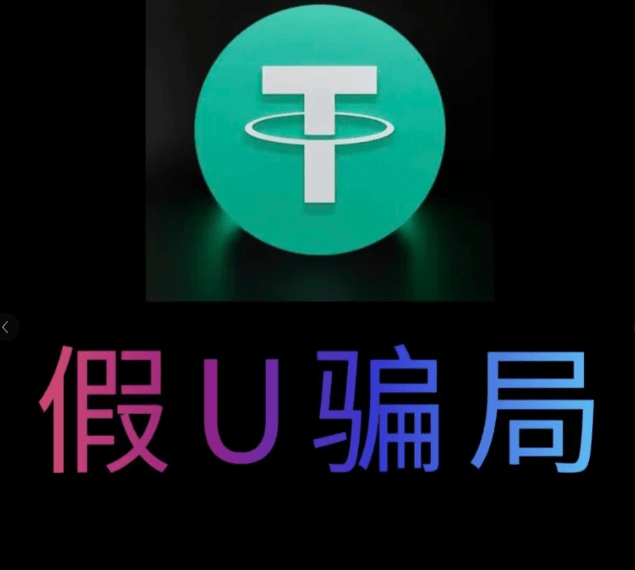Recently, several friends around me have been talking about fake USDT scams; someone just entered the space and fell for it, which is truly heartbreaking. Today, I will share the types of scams and methods to avoid pitfalls that I've organized. New friends must read it several times to avoid letting their hard-earned money go to waste!

1. Common types of fake USDT scams
Counterfeit USDT (fake recharge)
This trick is too harmful! Scammers can use technology to create fake transfer screenshots, and can even alter the data on blockchain explorers, making it look like the funds have arrived when they haven't actually been on-chain.
I've seen a scenario: a friend was trading off-exchange, and the buyer said they had completed the USDT transfer and even sent a screenshot. He released the coins without verifying, and after waiting a day, his wallet was still empty, only to find out the screenshot was fake.
Phishing links or fake wallets
Scammers are too good at pretending! Last time a fan told me someone impersonated IMToken customer service and sent a link, claiming his wallet was abnormal and needed verification. After clicking in and entering his private key, all his coins were gone in less than half an hour.
I have also received a fake Token Pocket installation package, with an icon that looked almost identical. Thankfully, I usually download from the official website; otherwise, I might have fallen for it.
Off-exchange (OTC) fraud
Low-price temptation is the easiest way to get people hooked! I once saw someone listing USDT at a 0.95 discount on a small platform, and when I privately contacted them, they said 'the platform fees are high, it's cheaper to transfer directly to me via WeChat.' I immediately felt something was off—what legitimate transaction circumvents platform guarantees?
Later, I heard that someone really believed in the 'friend payment' story and transferred 50,000 via Alipay, only for the other party to delete them as a friend after receiving the money. The platform couldn't do anything because it didn't go through their process.
Ponzi schemes or pyramid schemes
"Earn 1% passively every day, just deposit USDT"—I've heard this so many times! Previously, there was a project claiming to be 'quantitative arbitrage' that pulled me into a group to see their profit screenshots. When I asked about the underlying logic, they were evasive, and sure enough, they disappeared three months later.
Remember: stablecoins themselves do not generate interest; all 'high-yield financial products' use new people's money to pay off old people's accounts.
Impersonating exchanges or intermediaries
Just last week, someone impersonated Binance customer service and called me, claiming my account was 'suspected of money laundering' and needed to transfer 100,000 USDT to a 'secure account' to unfreeze it. I asked him, 'When has Binance customer service called using a mobile phone?' and he hung up immediately.
Legitimate platform customer service will never ask for your private key, nor will they ask you to transfer to a strange address!
2. How to identify and prevent fake USDT scams?
Verify on-chain transactions
This is what I do every time I conduct an OTC transaction: if the other party says they've transferred USDT, I always go to Tronscan or Etherscan to check the hash value myself. Screenshots can be edited, but on-chain records cannot be faked. Wait until the funds have arrived before releasing the coins; waiting an extra 5 minutes is better than losing tens of thousands.
Choose trustworthy trading channels
I only do OTC on leading platforms now, even if the fees are a bit high, it feels more secure. Small platforms have loose regulations; scammers can just close accounts and register with a new ID, making it very difficult to assert rights.
Beware of abnormal discounts
Market price is 6.9, and someone shouts 6.5? Don't think about it, it's either fake USDT or dirty money for money laundering. I've seen someone get greedy and buy 'cheap USDT', only to have the platform detect fund irregularities and freeze their account.
Protect private keys and authorizations
I keep my private key written on paper hidden at home, and I never store mnemonic phrases in my phone's photo album. Every time I authorize a DApp, I must clearly check the permissions—there was one time I almost authorized an unknown project for 'unlimited transfers', thankfully I looked closely.
Verify the other party's identity
For off-exchange trading, I always start with a small trial order to observe the other party's credibility. If someone is urging 'hurry up and trade' or 'don't hesitate', there's usually a problem. A person with genuine intentions won't mind waiting.
Beware of phishing links
I have saved the official links of commonly used exchanges and wallets on my phone and never click on unknown links in chat windows. Last time, there was a link that looked like 'binance.com', but upon closer inspection, it was 'b1nance.com'—just one letter off makes a huge difference!
In the end, no matter how many pitfalls there are in the cryptocurrency world, as long as you remember 'don't be greedy, don't be lazy, and verify more', you can at least avoid 80% of scams. The money we earn is hard-earned; don't let scammers easily take it away. If you really encounter suspicious situations, ask experienced people around you, or report it directly; never bear it alone!
If you feel helpless and confused in trading right now, and want to learn more about cryptocurrency and get the latest frontline news, click on my avatar to follow me, and you won't be lost anymore! @钱包守护者 Those who can see the market clearly have the confidence to operate. Steady profits are much more realistic than fantasizing about getting rich #币圈防骗指南 .